Students:Group Five: Filip, Lucie H, Karolina, Ivona: Difference between revisions
No edit summary |
No edit summary |
||
| Line 64: | Line 64: | ||
Goals both of park are education children, youth and adult and protect nature. The park employees offer many education programs for school and divide public for example field trip, lectures, etc. We considered The National Park Gesäuse is a little bit more modern for public than in the Czech Republic. | Goals both of park are education children, youth and adult and protect nature. The park employees offer many education programs for school and divide public for example field trip, lectures, etc. We considered The National Park Gesäuse is a little bit more modern for public than in the Czech Republic. | ||
Although is the conservation and education in the Czech republic for all students at schools level education and the general public in national parks now much expanded, we need to learn a lot of Austria. | Although is the conservation and education in the Czech republic for all students at schools level education and the general public in national parks now much expanded, we need to learn a lot of Austria. | ||
(Completed the rest of the group - Ivona Janecká, Karolína Vlčková and Filip Pokorný). | |||
Revision as of 16:40, 26 September 2013
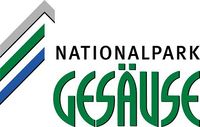

The last day of our field trip we visited Geasause National Park, which is near Eisenerz, the town we spent our time in the day before. It’s obvious that the weather in the mountains changes very often and it‘s raining a lot. Sadly, that day wasn’t an exception. Our guide in the national park was a very friendly woman from the department of environmental education. She showed us a presentation about the park, the preservation of nature, special projects and cooperation with partners. Her English was easy to understand.
About the national park
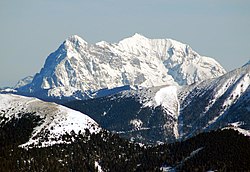
Gesäuse National Park is located in central Austria in the north of Styria province. It’s the youngest one out of the six Austrian national parks (founded in 2002) and with its area of 11,054 ha is the third largest. Half of the area is covered by forests. It‘s situated in the Ennstal Alps, which is a mountain range of limestone and dolomit origin. It’s been very popular among climbers for over 100 years. The character of the valley is formed by the river Enns that cuts through the mountains. The total length of this river is more than 200 km and its mostly regulated and modified by humans, except the part that flows through the park. The unchanged natural character and dynamics of the river, steep mountain ranges and huge differences in height provide suitable living conditions for endangered and rare species of plants and wildlife and high diversity of habitat. Each year the park welcomes over 30,000 visitors from all over the world and many of them are from abroad. We were quite surprised, that our guide said international visitors are often more enthusiastic and consider it even more important then local visitors!
Emphasis on education
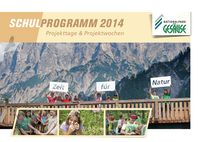
The organisational structure of the park consists of 4 departments, of which the department for environmental education was emphasized the most. It’s because education is a crucial step toward making the issue of nature conservation more familiar to visitors, students and children. There are many target programs for the public as well as for schools. The park employs about 30 national park rangers who work in the field and organise excursions for the public and ranger training courses for children (junior ranger project) and adults, too. Other programs are targeted at the local population (botanical and wildlife excursions) and schools (partner schools are going to take lessons about the NP - 2 hours a week). Besides education, communication and cooperation with representatives from the departments of environmental education of other Austrian national parks is important; they meet 3 times a year.
What we really liked is the way that employees of the national park educate children, schools and the public. They do it in a very attractive and interactive way; it’s something very different from boring informational tables full of text that are read only by really interested people. Sadly, this system still mainly the case in the national parks of the Czech republic. We should be inspired by NP Gesause where classes and families are attracted by observing small insects under the microscope, walking in the labyrinth of an ecological footprint, listening to the story of a tree or river, watching 3D movies or using an application for smart phones - Gesäuse App - which is not finished yet but is going to contain information about the NP related to geography. There are also 2 trails that are open from the beginning of May to the end of October, and a pavillon with a geological museum and a restaurant.
The national park and sustainability
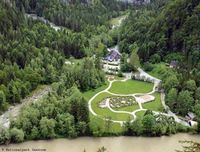
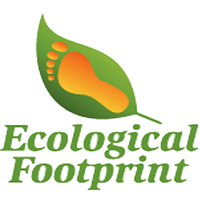
The activities of the NP are closely focused on issues of sustainable development, particularly integrating the concept of sustainable development into education for children and the public as well. Within the UN Decade of Education for Sustainable Development, the park has accredited projects such as junior rangers or the ecological footprint. The ecological footprint is a big labyrinth in the shape of a foot. Each person who enters the labyrinth will be able to get out of it only if he correctly answers the questions about a sustainable way of life that are placed on signs all over the labyrinth. It’s a very nice way how to introduce the issue to people who have never heard about it. An interesting way to educate children and the public about their personal impact on the capacity of the planet is a footprint calculator which was demonstrated by the guide during the presentation to visitors and everyone can calculate their contribution. The national park itself has been accredited with the Austrian ecolabel, which means that its activities are sustainable and nature friendly. Advanced visitor management is responsible to keep enough space for plants and wildlife using pictures of a locally protected bird with its youngsters - we think it’s a very effective way to alert tourists.
Critique
We would appreciate if the excursion was less theoretical. The presentation was really interesting and gave us all important information, but due to a lack of time and rainy weather, we missed the chance to take a walk in the park to personally witness its beauty. However, the high mountains all around were truly breathtaking. Despite the fact that park is visited by a considerable number of international visitors, the most interesting interactive and educative attractions are only in German. On the other hand, we appreciated the leaflets in different foreign languages, including Czech.
Links to Czech National park sites
- Krkonošský národní park
- Národní park Šumava
- Národní park Podyjí
- Národní park České Švýcarsko 1
- Národní park České Švýcarsko 2
The diary was written by Lucie Hadáčková. The final assignment is supposed to be done by the rest of the group...
Introduction
We would like to compare the youngest park in Austria National park Gesäuse which was founded in 2002 and the youngest park in the Czech Republic České Švýcarsko which was founded in 2000. Both of them concentrate activities to education.
National park České Švýcarsko
National park České Švýcarsko devote to ecological education and education. For children, youth and adult organisation stage a lot of interesting activities with ecological themes. Teachers can make organize field trip to national park and school trip. It is suitable for all type ages of children from preschool children to youth. All field trip for school are free. Children work with work paper, but there are practise activities too- say type of pH, meter temperature, etc. You can choose from seven type of field trip- for example: Zapomenutým krajem skalních věží a roklí, Malebným údolím dívky Pavlíny, Z ptačí perspektivy po Jetřichovických vyhlídkách, Za lososem k vodnímu mlýnu plném pohádek, Po stopách vyhynulých druhů Českého Švýcarska, Za středověkými hrady Kyjovského údolí, Exkurze a výlet na klíč (dle přání objednávajícího). The park publish magazine about ecological education in the National park. The magazine´s name is Výří zprávy which is dedicate to ecological education in National park. The magazine is published once for one month. This magazine information teacher and people from EVVO and people who interesting about ecological education about news from in EVVO in National park. The magazines contains eco activities, which teachers can use in lesson and inform about activities in the park. Children can spend their free time in Ranger unit. Ranger was rename in 2010 and cooperate with international project Junior Ranger Project. The main activities of this unit are nature of National Park, protection nature and landscape, games, camping, health science, etc. There are lectures held and interactive programs or children and youth offered in the park. You can also get a part time job in helping the nature.
The National Park Gesäuse
The National Park Gesäuse id divided for 4 parts- Department of nature conservation and research, Department for forestry and management, Department for communication and Department for environmental education. We will concentrate for last one. In the park we can choose from many education programs for example them path Lettmair Au, theme path Rauchbodenweg and theme path Sagenweg. There are many target programs for public as well as for schools. The park employs about 30 national park rangers who work in the field and organise excursions for public and ranger training courses for children (junior ranger project) and adults too. Other programs are targeted for local population (botanical and wildlife excursions) and for schools (partner schools are going to take lessons about the NP - 2 hours a week). Beside the education, a communication and cooperation with representatives from department of environmental education of other Austrian national parks is important, they meet 3 times a year. The park employees concentrate activities to works with universities and others research workplace. There is situated Research workplace in Weidendom and Journey to microcosm nature when children can see much more extend nature things. Visitors can get Gesause app from apple, which we haven’t seen in Czech Republic yet. The employees of the Austrian park offer relax programs for example build porch from willow when people can relax and enjoy it. They have here the Christmas markets in December where people can buy product from 15 solders and regional products which cooperate with each other. National park has special building which is inspired by example of nature which is name Pavillon Gstatterboden when is geological exhibition. The exhibition are not boring because they are interactive and visitor can try everything like climbing for artificial wall, etc. In this building people can spend time for rest in the restaurant or buy some presents.
Resume
Goals both of park are education children, youth and adult and protect nature. The park employees offer many education programs for school and divide public for example field trip, lectures, etc. We considered The National Park Gesäuse is a little bit more modern for public than in the Czech Republic. Although is the conservation and education in the Czech republic for all students at schools level education and the general public in national parks now much expanded, we need to learn a lot of Austria.
(Completed the rest of the group - Ivona Janecká, Karolína Vlčková and Filip Pokorný).